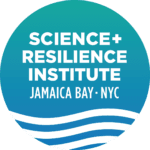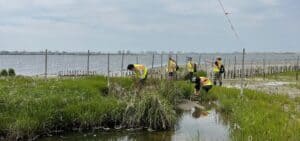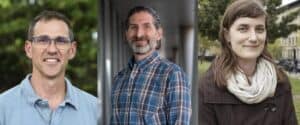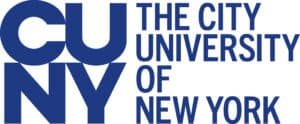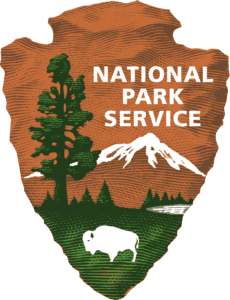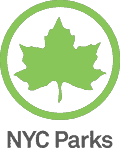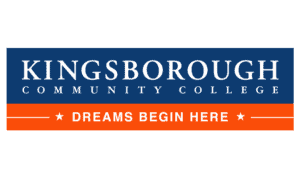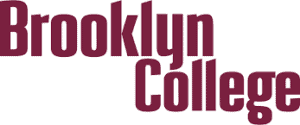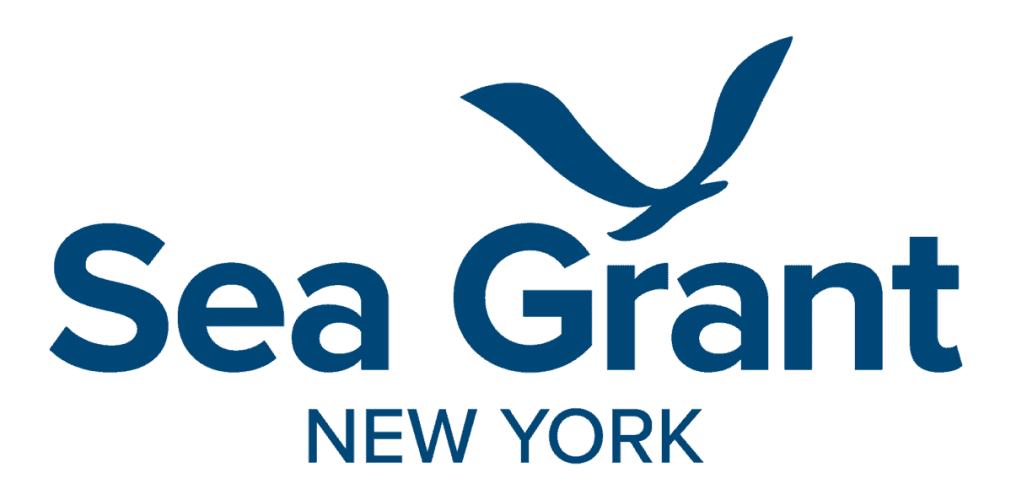Nature-Based Solutions (NBS) involve utilizing natural features and processes as versatile alternatives to traditional built structures. The SRIJB is engaged in various projects focused on researching natural and nature-based features (NNBF) and establishing a community practice for implementing and monitoring NBS
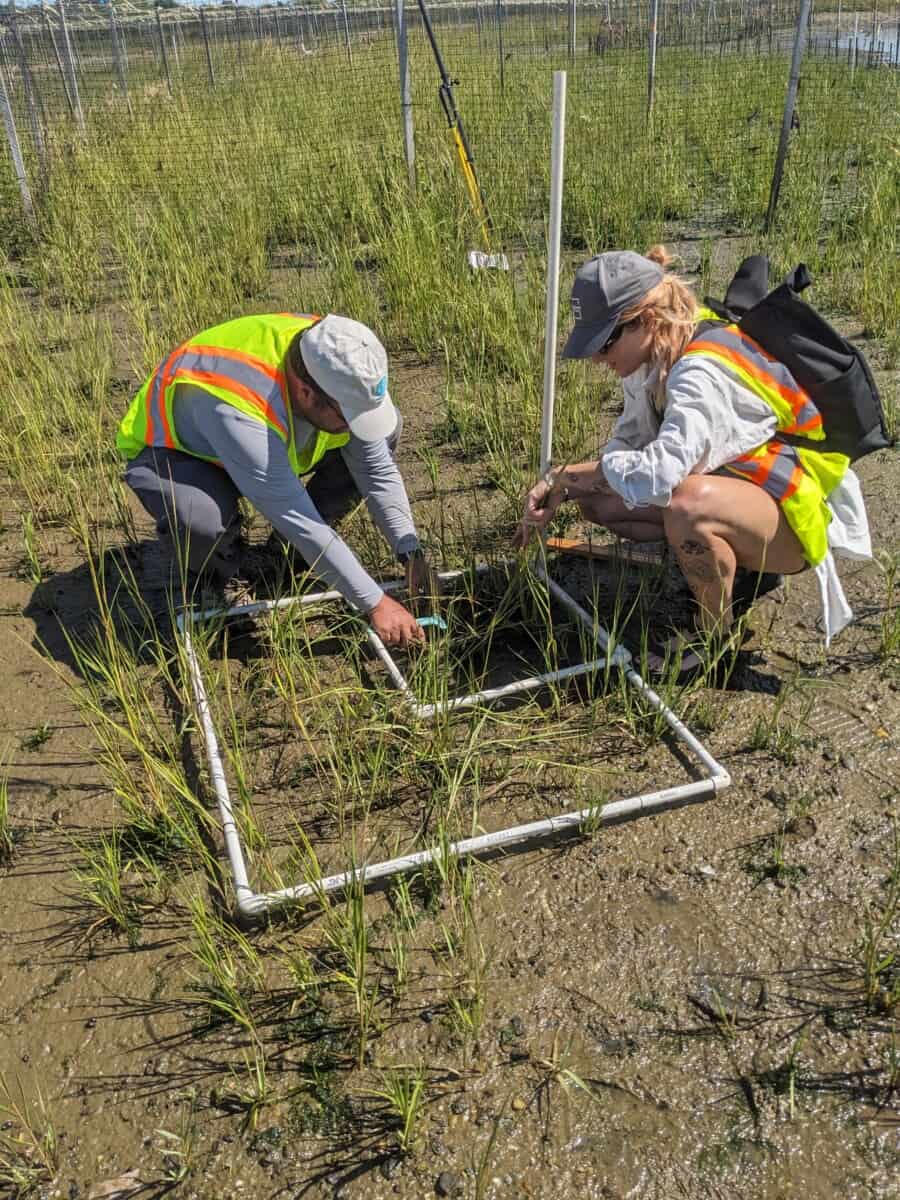
Addressing Knowledge Gaps in NNBF
We are collaborating on Applying and Sharing Emerging Knowledge about Natural and Nature-Based Features and Resilient Shorelines in New York with NY Sea Grant. This initiative funded by The US Coastal Research Program (USCRP) aims to connect diverse end-users in NYC and NYS with relevant expertise on Natural and Nature-Based Features (NNBF), presenting them as multi-beneficial, more resilient alternatives to traditional shoreline armoring.
The project involves organizing forums, workshops, developing data visualization and communication products, and formalizing a community of practice. The objective is to share key findings with local, national, and international audiences. Leveraging existing networks, the project strives to bring applicable research and experiences to practitioners and foster conversations between researchers and practitioners. This collaborative effort ensures that shoreline monitoring, data analysis, visualization, and research extension products are accessible and useful for the widest range of interested parties
Forum & Workshop Information
This workshop conducted in June of 2023 was the first in a series aimed to address knowledge gaps in shoreline management, specifically in regards to NNBF, through applied research and management. The stakeholder needs identified during this workshop informed the focus and format of future gatherings and knowledge sharing. Stakeholders were able to identify their three primary knowledge gaps in NNBF development and implementation. Being (1) success rates (and failures) of existing NNBF projects, (2) baseline conditions of sites, and (3) socio-cultural impacts of NBS development.
Click here for the PDF summary of this workshop:
- Forum #1 was a virtual meeting held in October 2023 entitled Success Rates and Baseline Conditions of NNBF – Part I, to help address the knowledge gaps identified during Workshop #1. Three speakers who are experts in the field of NNBF presented their work to stakeholders and other interested parties.
- Dr. Jon Miller: Presented the results of his recent work with Oyster Castles in Gandy’s Beach, NJ
- Dr. Rachel Gittman: Presented work on ecological principles in NNBF (Oyster-based NBS projects)
- Dr. James O’Donnell: Presented preliminary assessments of wave damping by Reef Balls in the inter-tidal zone
Click here for Speaker One-Pagers and Speaker Presentation Slides:
Forum #2 was a virtual meeting held December 14th, 2023 entitled Success Rates and Baseline Conditions of NNBF – Part II, to help address the knowledge gaps identified during Workshop #1. Four speakers who are experts in the field of NNBF presented their work to stakeholders and other interested parties.
- Dr. Bret Webb (University of South Alabama): Alabama Comprehensive Living Shoreline Monitoring Program
- Dr. Chester Zarnoch (CUNY Baruch): Nature-based approaches for improving water quality (oysters & mussels)
- Dr. Mariko Polk (North Carolina Sea Grant): Measuring multi-functionality in living shorelines
- Dr. Joel Fodrie (University of North Carolina at Chapel Hill): Integrating oyster natural history and fish-habitat relationships in living shoreline designs
Click here for Forum 2 Speaker One-Pagers and Slides
To request a recording, please contact Georgie (ghumphries@gc.cuny.edu)
Forum #3 was a virtual meeting held on February 16th, 2024 entitled Socio-Cultural Benefits of NNBF– Part III, to help address the knowledge gaps identified during Workshop #1. Three speakers who are experts in the field of NNBF presented their work to stakeholders and other interested parties.
- Dr. Don Nelson (University of Georgia)
- Dr. Scott Hemmerling (The Water Institute)
- Dr. Lindsay Campbell (U.S. Forest Service)
Click here for Forum 3 Speaker One-Pagers and Slides:
To request a recording, please contact Georgie (ghumphries@gc.cuny.edu)
Taking place on April 30th, 2024 will be the Statewide NNBF Symposium. At this event, we will debut the results and products of the virtual forums and take a deeper dive into the identified topics of interest: baseline conditions, success rates, and socio-cultural benefits of NNBF. The goal of this in-person symposium is to coordinate across New York to inform shoreline planning, design, and management. Natural and Nature-Based Features (NNBF) case studies from New York City, Long Island, Hudson, and the Great Lakes will be presented and will highlight NNBF project goals, successes and failures, shoreline protection implications, ecological function, post-completion monitoring, and data collection. On-site discussions will result in regional lessons learned that fit into a larger framework for New York and a diverse set of stakeholder processes and products that utilize existing NNBF research and monitoring data.
The symposium will take place synchronously at four in-person locations, including New York City (CUNY Advanced Science Research Center), Long Island (Stony Brook University), Hudson (Norrie Point Environmental Center), and the Great Lakes (Woodlawn Beach State Park). Please note, there will be no virtual option.
If you are interested in attending, please email Georgie (ghumphries@gc.cuny.edu)
Addressing Regulatory Impediments
The Hudson River Foundation awarded funding to Dr. Brett Branco and Dr. Daniel Shtob, who are leading a research team with expertise in ecology, sociology, law, engineering, and landscape architecture design. Their research will integrate scientific and policy knowledge in a novel effort to understand the challenges and opportunities to advance NBS projects designed to enhance shallow-water habitats in the Hudson River Estuary. The results of this study will help a broad community understand regulatory norms and their impact on shallow-water habitat restoration and enhancement. In addition, the team will consider how regulations might be adapted to accelerate restoration efforts while maintaining the necessary protections needed to manage the highly urbanized harbor and estuary.
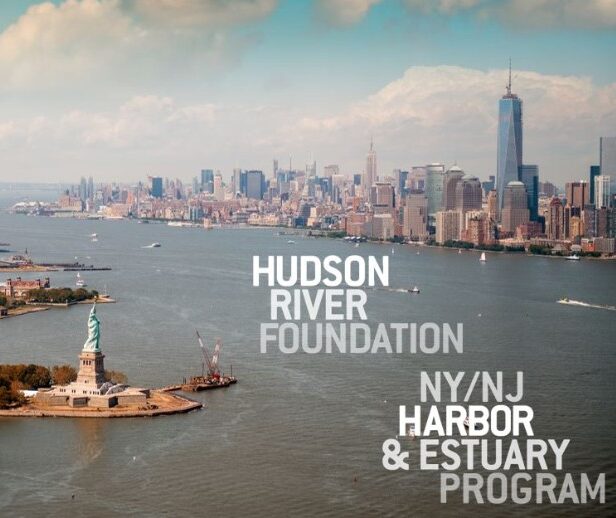

Measuring Success Framework
NNBF are thought to mitigate some flooding and erosion, while also providing ecological and social co-benefits without disrupting natural coastal processes.
However, decision-makers need data to show whether NNBF will achieve the resilience benefits that communities value. This data gap motivated a collaborative multi-year, stakeholder-driven effort led by the Science and Resilience Institute, and funded by NYSDOS, NOAA, and NYSERDA. The result is a Statewide Shoreline Monitoring Framework that guides consistent data collection and evaluation. Using the framework, managers and communities will be able to evaluate resilience benefits across shoreline types to make evidence-based decisions about coastal protection.
